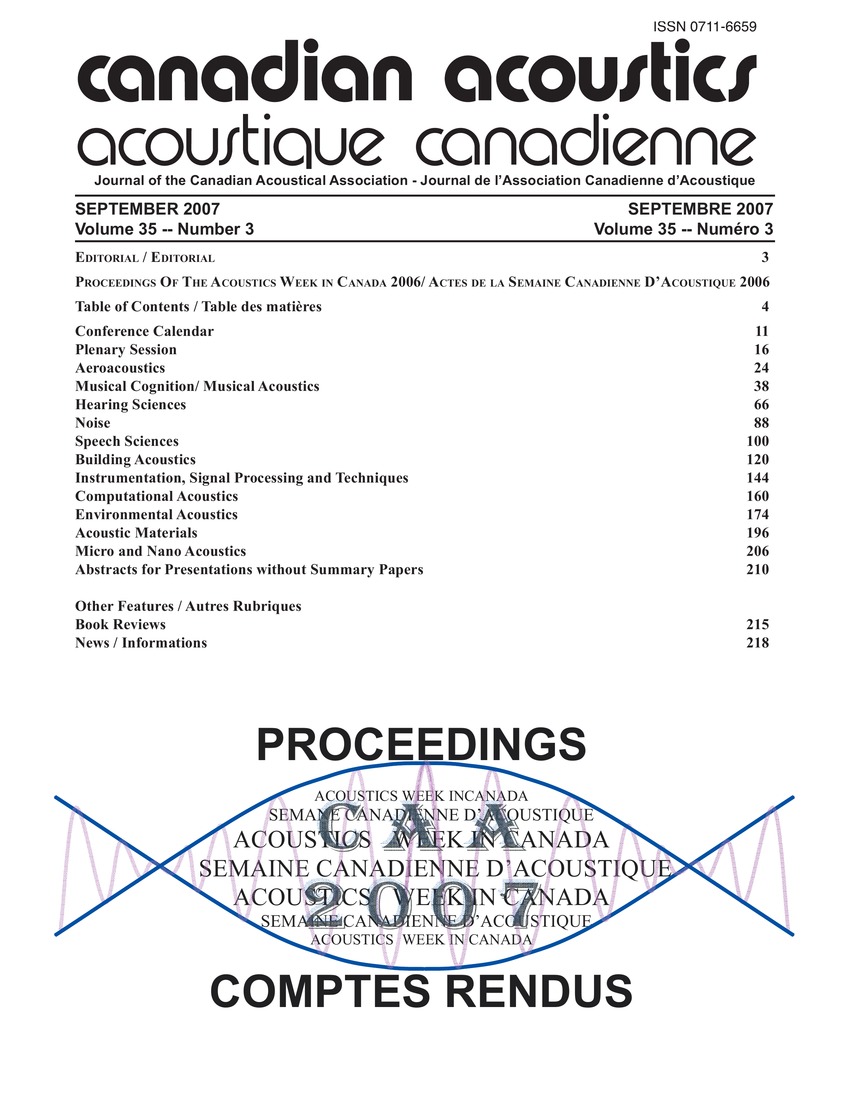Memory for musical intervals: Cognitive differences for consonance and dissonance
Mots-clés :
Bandwidth, Mathematical models, Storage allocation (computer), Musical context, Short-term memory (STM), Small-integer ratio dyadsRésumé
A short-term memory (STM) paradigm has been used to examine the influence of frequency separation versus frequency ratio on the processing of pure-tone dyads presented outside of a musical (tonal) context. The physical interaction produces a sensation termed beating when the frequency separation between a dyad's two tones is less than a single critical bandwidth. Models of sensory consonance/dissonance (C/D) predicted that all pure-tone dyads with frequency differences greater than a critical bandwidth should be considered to be constant. The representation of musical C/D typically reflects an integration of the sensory properties of a complex-tone signal, the musical context, and the listener's exposure to intervals. Nonmusicians displayed more accurate memory for large-integer compared with small-integer ratio dyads.Fichiers supplémentaires
Publié-e
Comment citer
Numéro
Rubrique
Licence
Author Licensing Addendum
This Licensing Addendum ("Addendum") is entered into between the undersigned Author(s) and Canadian Acoustics journal published by the Canadian Acoustical Association (hereinafter referred to as the "Publisher"). The Author(s) and the Publisher agree as follows:
-
Retained Rights: The Author(s) retain(s) the following rights:
- The right to reproduce, distribute, and publicly display the Work on the Author's personal website or the website of the Author's institution.
- The right to use the Work in the Author's teaching activities and presentations.
- The right to include the Work in a compilation for the Author's personal use, not for sale.
-
Grant of License: The Author(s) grant(s) to the Publisher a worldwide exclusive license to publish, reproduce, distribute, and display the Work in Canadian Acoustics and any other formats and media deemed appropriate by the Publisher.
-
Attribution: The Publisher agrees to include proper attribution to the Author(s) in all publications and reproductions of the Work.
-
No Conflict: This Addendum is intended to be in harmony with, and not in conflict with, the terms and conditions of the original agreement entered into between the Author(s) and the Publisher.
-
Copyright Clause: Copyright on articles is held by the Author(s). The corresponding Author has the right to grant on behalf of all Authors and does grant on behalf of all Authors, a worldwide exclusive license to the Publisher and its licensees in perpetuity, in all forms, formats, and media (whether known now or created in the future), including but not limited to the rights to publish, reproduce, distribute, display, store, translate, create adaptations, reprints, include within collections, and create summaries, extracts, and/or abstracts of the Contribution.


